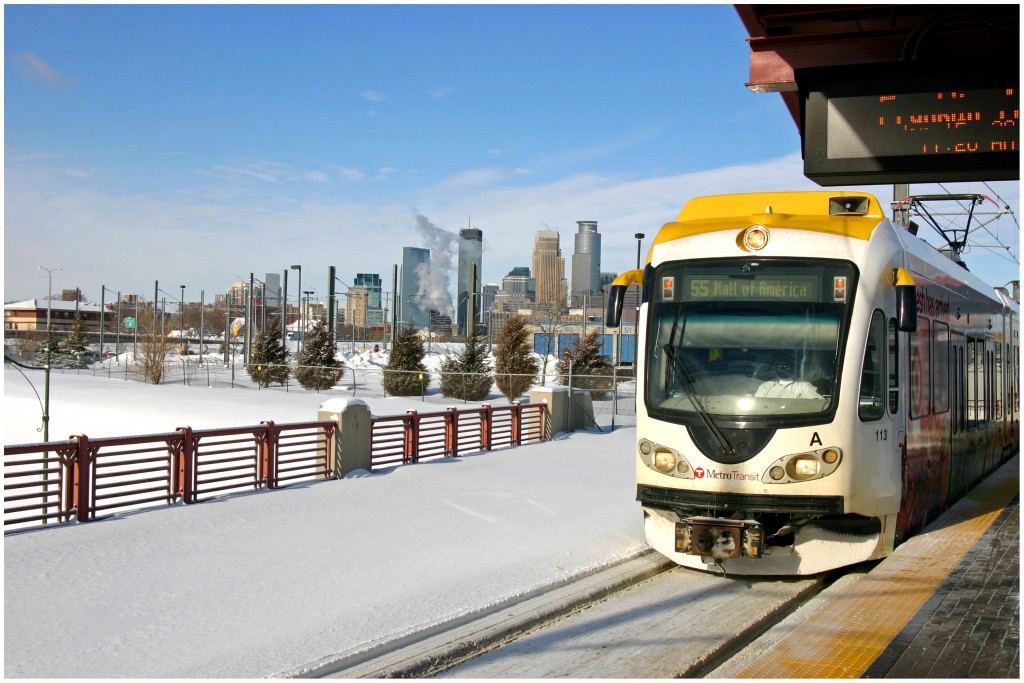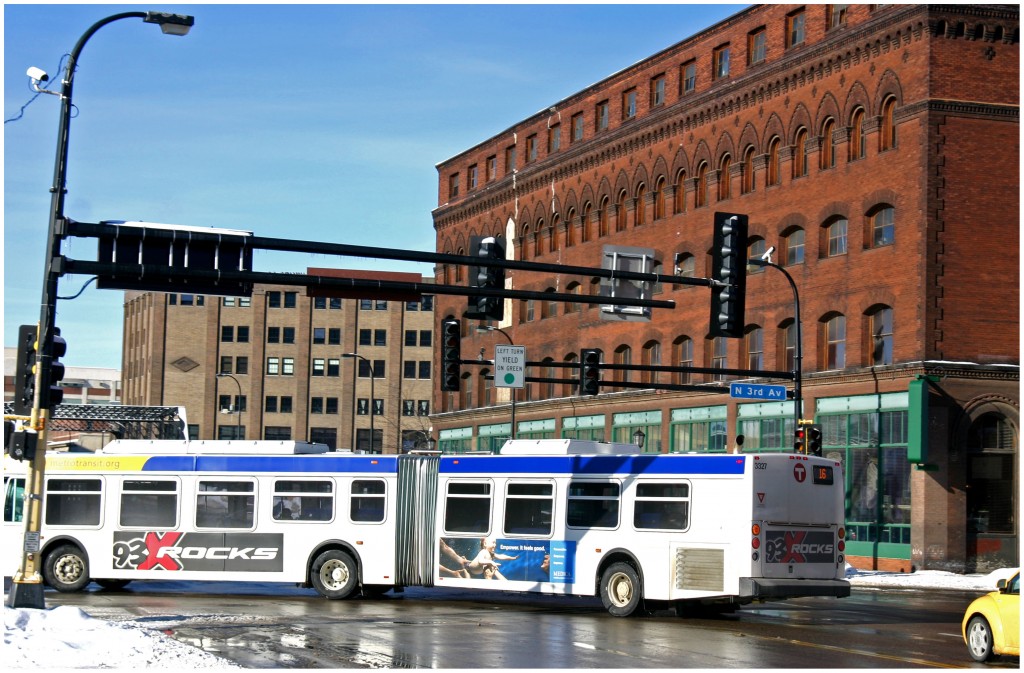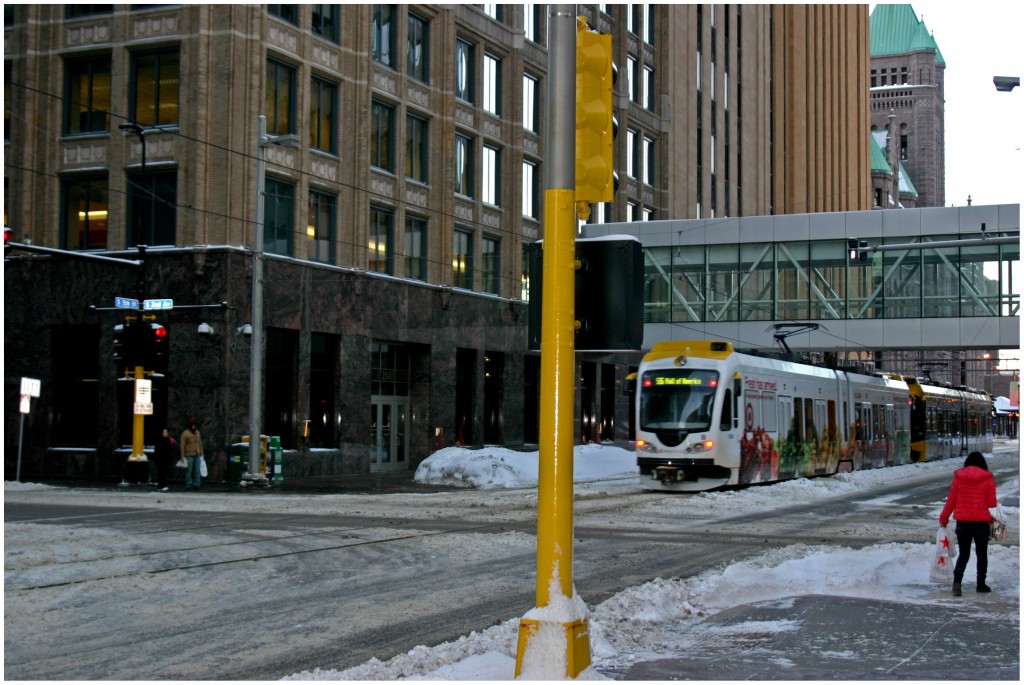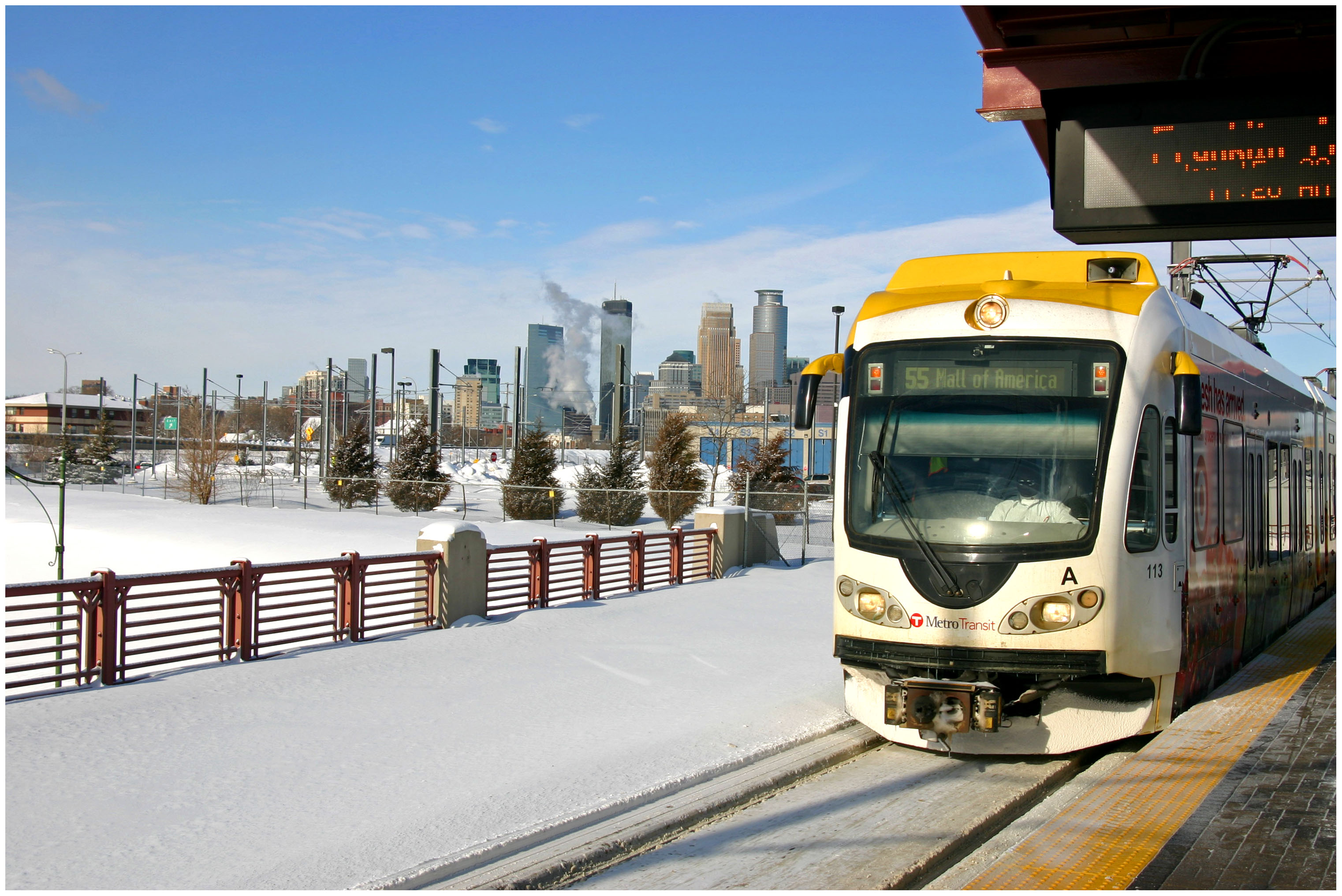Minneapolis is not a coastal city, nor does it boast a favorable climate, but the city does count a growing population of young people and 21st century jobs on its score sheet. What is also unique about this German Midwestern city is that it has become the envy of other cities due to its impressive bicycling culture, expanding transit system and diverse economy.
The Twin Cities boast two unique transport items. The first is the bicycle highway connecting bicycle commuters with downtown Minneapolis and other job centers. The second is a growing light rail system that taps into regional commuter rail. The Minneapolis light rail system is still young, but this has benefitted its operations.

Hiawatha Light Rail at Franklin Avenue Station (January 2011). Photograph by Randy A. Simes.
Unlike St. Louis and Denver, Minneapolis’ light rail system has low-floor vehicles that do not have awkward steps right when you enter the train. The more modern rolling stock used in Minneapolis is also more visually attractive and at least seemed to be quieter.
Presently the light rail system extends from the famous Mall of America, through the region’s international airport eastern suburbs, and into downtown Minneapolis eventually terminating at the recently completed Target Field (home of the Minnesota Twins).
The good thing about the line is that it is there and that it has been able to improve on earlier designs incorporated elsewhere throughout the United States. The problem is that the route runs through a very suburban-designed part of the region and offers very little in terms of walkability immediately surrounding the stations. Transit-oriented development will certainly help this situation, but significant time and money will be needed to right the ship.
Much like Atlanta, Minneapolis seemed to sacrifice urban connectivity so that their early system connected major nodes like their airport, stadiums and mega mall. As a result much of the large population nodes are left off the map, and thus out of reach of this young light rail system.


Articulated bus in the Warehouse District [LEFT], and Hiawatha Light Rail running through downtown Minneapolis. Photographs taken by Randy A. Simes in January 2011.
What will help this issue immensely will be the system’s growth. Fortunately, the region’s rail transit system is about to grow and expand into St. Paul. Under construction now is the $957 million, 11-mile Central Corridor light rail project. This will tap into the existing Hiawatha light rail line at its Metrodome Station in downtown Minneapolis.
The 16-station Central Corridor light rail line will connect downtown St. Paul and the University of Minnesota with the rest of the overachieving transit system. Current projections call for the first passengers to start riding in 2014.
While Minneapolis and St. Paul are not there yet when it comes to transit, they have been investing in a system for years that is beginning to become regional and comprehensive. These moves already seem to be paying nice dividends for the Twin Cities, and have placed it among one of the few good economic performers in the Midwest. Where would Cincinnati be today had it began investing in regional rail transit in 2002 when MetroMoves put regional light rail before voters?
